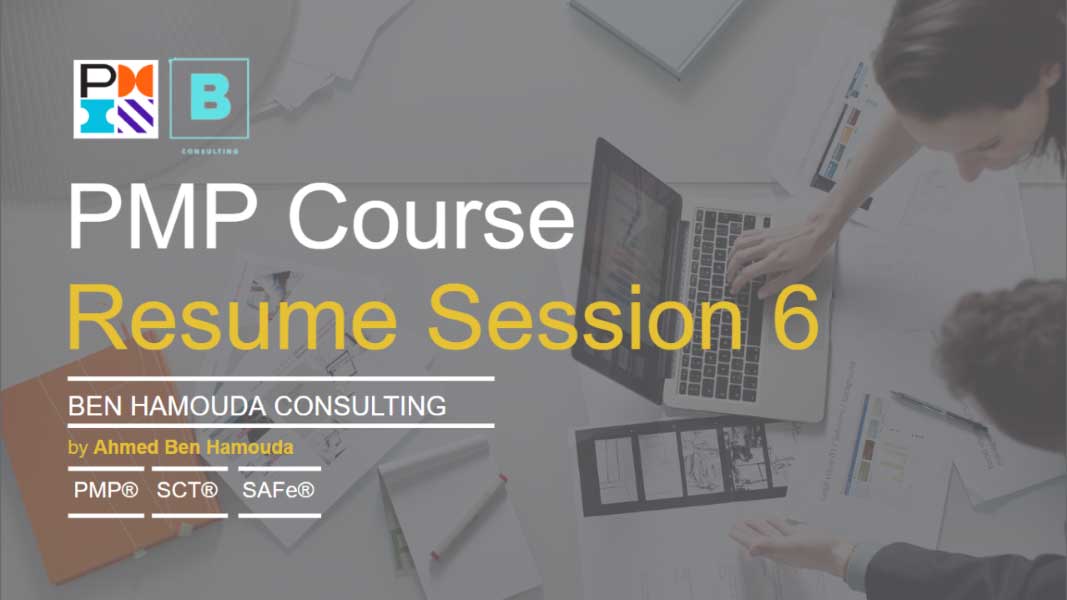
PMP Training: Resume Session 5
24 June 2024
PMP Training: Resume Session 7
8 July 2024In this session we went through the Chapter of Planning Project Work, which is considered as the show-off chapter for every project manager, since planning is at the heart of every PM’s work.
Section 1: Collect and analyze project requirements
It is crucial for every Project Manager to use proper and different techniques to capture all the requirements from the stakeholders using various techniques such as Focus Groups, Benchmarking, Expert Opinion, Nominal Group Technique, Context Diagrams, etc.
The techniques and tools to be used are described in the Scope Management Plan in a predictive project, and then a scope statement, WBS and WBS dictionary will be created and sent for approval in order to baseline the scope.
One of the tools for tracking the requirements is the RTM where the objectives, accpetance criterias and requesting stakeholders are recorded for each requirement.
In this section we also studied different voting techniques on requirements such as unanimity, majority, plurality and dictatorship.
Section 2: Develop the schedule of a predictive project
The WBS is an important source for identifying the work to be carried out during the project. It is used as a basis later for defining the activities, sequencing them and defining the dependencies and relationships between them in order to build a schedule in a predictive project.
There are four types of dependencies: mandatory, discretionary, internal and external. There are also four types of relationships: Finish-to-start, start-to-start, finish-to-finish, and start-to-finish. Leads and Lags can be considered when scheduling the project.
Then a network diagram is created and the critical path, near critical path and floats are defined and calculated. When there are issues with resource planning, resourve leveling and resource smoothing could be considered as a solution, with the first impacting the schedule.
We also went through GANTT chart, Milestone chart and practiced several questions.
Section 3: Estimation Techniques
It is very important to allocate enough time for activities in the project and the project manager and the team can use different estimation techniques mainly:
- Top-down (Analogous) estimating
- Conceptual Estimate
- Bottom-Up Estimating (most accurate)
- Parametric Estimating
- Three-Point Estimating (Triangular PERT and Beta Distribution)
We went through the estimation levels as well as the difference between relative and definitive estimations. The participants answered different questions to practice their understanding.
Section 4: Tailoring the planning activities
It is very important to tailor the planning activities since each project has different needs.
Tailoring starts with selecting a development approach, then tailor it according to the organizational processes, then tailor according to the project needs, and finally keep improving along the way.
Many other aspects can be taken into consideration when tailoring such as constraints, assumptions, organizational process assets, entreprise environmental factors, market situation, suppliers availability, standards and regulations, etc.
The session was ended with a serie of questions and answers as usual to help the participants get more explanations and clarifications as necessary.




